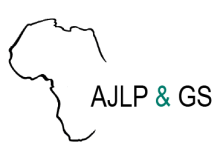Resource information
Context and Background Estimating cereal yields in Morocco is still based on the traditional statistical method known as "CCE" crop cutting, which is objective but tedious and requires a lot of logistics, despite the fact that in 2012 a system for predicting cereal yields in Morocco called "CGMS_MA" was introduced to support this method; this system does not allow yields to be estimated at plot level, given the coarse resolution of the integrated satellite images (NDVI_AVHR), which is 1.1km. The use of finer resolution satellite images and more precise techniques is therefore very much in demand.Goal and ObjectivesThe main objective of this research project is to model wheat yield at plot level using phenological parameters derived from SENTINEL 2 'S2' satellite images in semi-arid areas of Morocco.MethodologyTwo approaches were adopted for this modelling:- An MRL approach based on STEPWISE linear regression using phenological parameters from NDVI-SENTINEL2 satellite images.- An MML/MMA approach based on the use of Artificial intelligence (Maching Learning/Deep Learning) for yield modelling.- The 1st MRL modelling based on STEPWISE linear regression revealed performance indicators R2 and RMSE testing a strong correlation between predicted and observed yield (R2 = 0.75; RMSE= 7.08q /ha). The estimated wheat yields were validated using the k-fold cross-validation method.The MRL model explained 75% of the spatial variation in yield, with a root mean square error (RMSE) of 3.45 qx/ha.- The 2nd model was designed to improve on the first model by incorporating artificial intelligence techniques.The resultsThe results obtained showed that the use of these techniques gives good results and the performances are higher: The R2 correlation coefficient is 0.96 for the MLP deep-Learning algorithm and 0.94 for the Maching Learning algorithms (kNN, RF and CHAID), whereas it is lower for the STEPWISE regression.Finally, these MML/MAA techniques coupled with remotely sensed phenological data from LSP allow good modelling of wheat yields and good crop monitoring; they can form the basis of a high-performance system for estimating wheat yields, especially in the semi-arid zones of Morocco where the crop is highly dependent on climatic variations.


